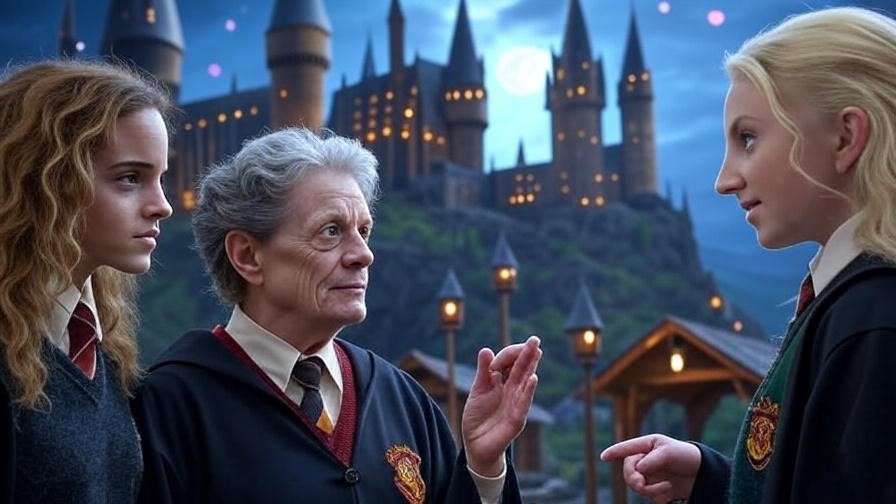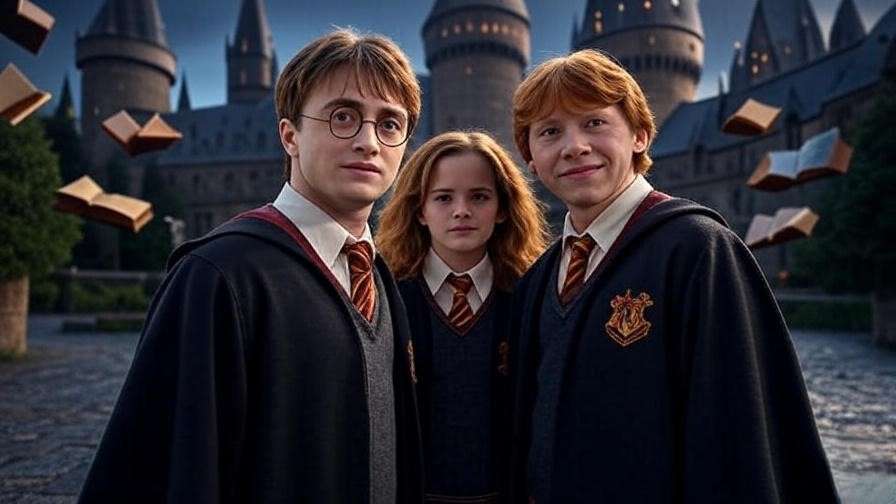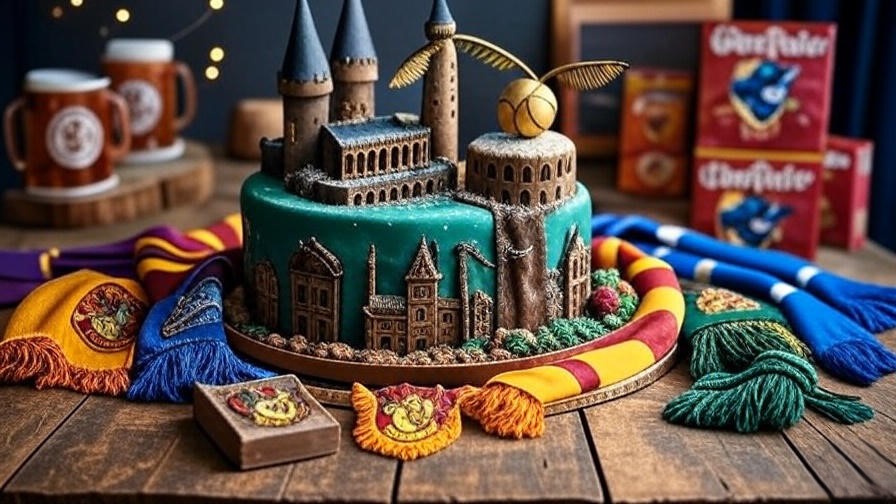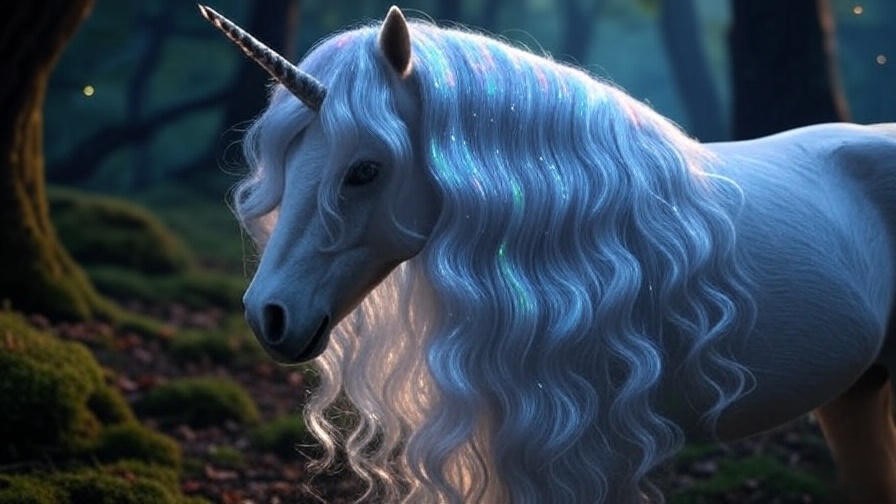What if the magical world of Hogwarts, with its spells and heroism, doesn’t quite measure up to modern standards of gender equality? For fans of Harry Potter, this question strikes at the heart of a beloved series that has shaped generations. One way to explore this is by asking: does Harry Potter pass the Bechdel Test? This simple yet revealing framework evaluates female representation in media, offering insights into how women are portrayed in J.K. Rowling’s iconic saga. In this comprehensive analysis, we’ll examine whether the Harry Potter books and films meet the Bechdel Test’s criteria, unpack the strengths and weaknesses of gender dynamics in the Wizarding World, and provide fans with a nuanced perspective on a franchise that continues to spark discussion. Whether you’re a lifelong Potterhead or a curious critic, this deep dive will uncover what the series reveals about gender roles and why it matters.
What is the Bechdel Test?
Understanding the Bechdel Test’s Criteria
The Bechdel Test, first introduced by cartoonist Alison Bechdel in her 1985 comic strip Dykes to Watch Out For, is a straightforward tool for assessing female representation in fiction. To pass, a work must meet three criteria: (1) it must feature at least two named female characters, (2) who talk to each other, (3) about something other than a man. While simple, these requirements highlight whether women have meaningful roles beyond supporting male characters. In the context of Harry Potter, the test helps us evaluate how female characters like Hermione Granger, Professor McGonagall, or Luna Lovegood contribute to the narrative independently of male-driven plots.
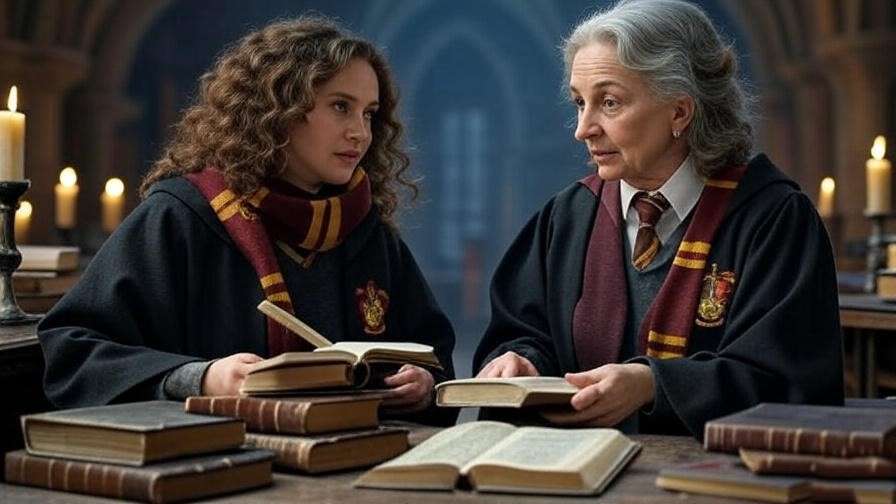
Limitations of the Bechdel Test
The Bechdel Test is a starting point, not a definitive measure of feminism or gender equality. It doesn’t assess the depth, agency, or complexity of female characters, nor does it account for narrative context. For example, a story might pass the test with a trivial conversation about weather while failing to portray women as empowered. Conversely, a work might fail the test yet feature strong, independent female characters. In analyzing Harry Potter, we’ll use the test as a lens but go beyond it to explore the broader context of gender representation, ensuring a balanced and insightful critique.
The Harry Potter Series: A Brief Overview
The Books and Films in Context
J.K. Rowling’s Harry Potter series, spanning seven books and eight films, is a cultural juggernaut. Published between 1997 and 2007, the books follow Harry Potter, a young wizard, as he battles dark forces in a magical world. The films, released from 2001 to 2011, brought this universe to life for millions. Key female characters—Hermione Granger, Professor Minerva McGonagall, Luna Lovegood, Molly Weasley, and others—play significant roles, but their interactions and agency vary across the series. Set in 1990s magical Britain, the story reflects its time, which influences how gender is portrayed.
Why Gender Representation Matters in Harry Potter
Harry Potter’s young adult audience, spanning children to adults, makes its portrayal of gender particularly impactful. The series shapes how readers and viewers perceive roles, relationships, and power dynamics. Strong female characters can inspire, while limited or stereotypical portrayals may reinforce outdated norms. As modern audiences demand more inclusive narratives, examining whether Harry Potter passes the Bechdel Test helps fans understand the series’ legacy and its relevance in today’s conversations about diversity and equality in storytelling.
Does Harry Potter Pass the Bechdel Test? Book-by-Book Analysis
Methodology for Analysis
To determine if Harry Potter passes the Bechdel Test, we’ll analyze each book for scenes that meet all three criteria: two named female characters, conversing with each other, about a topic unrelated to men. Given Harry’s role as the central protagonist, female-to-female interactions may be less frequent, but we’ll focus on meaningful moments involving characters like Hermione, McGonagall, or Ginny Weasley. This systematic approach ensures an objective evaluation while acknowledging the narrative’s male-driven focus.
Book 1: Harry Potter and the Philosopher’s Stone
In Harry Potter and the Philosopher’s Stone, female characters are limited but impactful. Hermione Granger emerges as a brilliant, rule-abiding student, while Professor McGonagall serves as a stern yet fair authority figure. Molly Weasley appears briefly as a nurturing mother. A potential Bechdel Test-passing moment occurs when Hermione and McGonagall discuss school rules or academic matters, such as during Hermione’s sorting or classroom scenes. However, these interactions are brief and often tied to Harry or Ron. The book narrowly passes the test, but female conversations are minimal, reflecting the story’s early focus on Harry’s introduction to Hogwarts.
Book 2: Harry Potter and the Chamber of Secrets
Chamber of Secrets introduces new female characters, including Ginny Weasley and Moaning Myrtle. Hermione remains central, driving the plot with her research on the Chamber. A key scene involves Hermione discussing the Polyjuice Potion with Professor Sprout or other female students, focusing on magical ingredients rather than male characters. However, such moments are rare, as most female interactions orbit Harry’s quest. The book passes the Bechdel Test, but the scarcity of qualifying scenes suggests limited female-driven dialogue, a trend we’ll explore further.
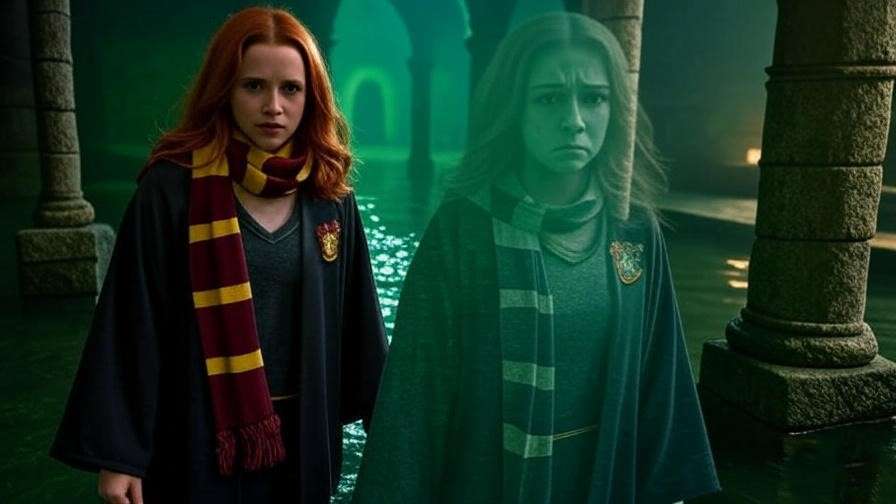
Book 3: Harry Potter and the Prisoner of Azkaban
Prisoner of Azkaban deepens Hermione’s role and introduces Professor Trelawney, a quirky Divination teacher. A notable Bechdel Test-passing scene occurs when Hermione debates Trelawney’s predictions with Professor McGonagall, focusing on the validity of Divination as a subject. This academic exchange highlights Hermione’s intellect and McGonagall’s authority, free of male-centric topics. The book passes more convincingly than its predecessors, with female characters gaining more prominence, though their interactions remain secondary to Harry’s journey.
Book 4: Harry Potter and the Goblet of Fire
Goblet of Fire expands the Wizarding World with the Triwizard Tournament, introducing Fleur Delacour, a skilled Beauxbatons champion. Hermione’s role grows as she navigates academic and social challenges, while Professor McGonagall remains a pillar of authority. A potential Bechdel Test-passing moment occurs when Hermione discusses the Yule Ball or magical theory with female characters like Parvati Patil or Padma Patil, focusing on preparations or schoolwork. However, these conversations are often brief and overshadowed by the tournament’s male-driven drama. The book passes the test, but the limited scope of female interactions highlights a recurring pattern in the series.
Book 5: Harry Potter and the Order of the Phoenix
Order of the Phoenix introduces Luna Lovegood, a quirky and resilient character, and the antagonistic Dolores Umbridge. Female characters gain more prominence, with Hermione leading the formation of Dumbledore’s Army alongside Luna and Ginny. A clear Bechdel Test-passing scene occurs when Hermione and Luna discuss magical creatures or resistance strategies, such as during their planning sessions in the Room of Requirement. These moments emphasize female agency and collaboration. The book passes the test more consistently, reflecting a shift toward richer female interactions as the series matures.
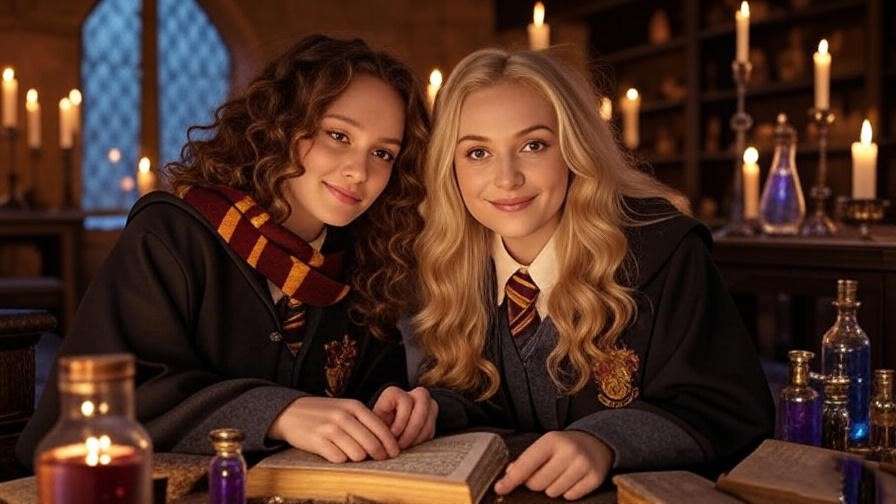
Book 6: Harry Potter and the Half-Blood Prince
In Half-Blood Prince, the narrative darkens, but female characters like Hermione, Luna, and Professor McGonagall remain vital. Bellatrix Lestrange emerges as a formidable villain. A Bechdel Test-passing moment includes Hermione and Luna discussing magical theory or their shared experiences, such as during moments at Hogwarts. Additionally, scenes involving McGonagall and other female professors addressing school matters qualify. The book passes the test, though female conversations are often secondary to the central plot involving Harry and Dumbledore. The growing complexity of female roles signals progress in representation.
Book 7: Harry Potter and the Deathly Hallows
Deathly Hallows, the series’ climax, showcases female characters at their strongest. Hermione’s leadership in the Horcrux hunt, Luna’s defiance, and Molly Weasley’s iconic battle against Bellatrix highlight their agency. A key Bechdel Test-passing scene occurs when Hermione and Luna strategize about magical artifacts or share personal reflections during their time on the run. Molly’s interactions with other female Order members, like Tonks, also qualify. The book passes the test convincingly, with female characters driving significant moments, though the narrative remains anchored by Harry’s mission.

Do the Harry Potter Films Pass the Bechdel Test?
Differences Between Books and Films
The Harry Potter films, while faithful in many ways, condense the books’ sprawling narratives, often reducing female interactions. Scenes that pass the Bechdel Test in the books—such as Hermione’s discussions with professors or peers—are sometimes cut or altered to focus on action or Harry’s perspective. The films’ visual medium emphasizes spectacle over dialogue, which can diminish female-driven subplots. However, characters like Hermione, McGonagall, and Luna retain strong presences, making the films a valuable case study for Bechdel Test analysis.
Film-by-Film Bechdel Test Analysis
- Philosopher’s Stone: A brief scene between Hermione and McGonagall about school rules passes the test, but female dialogue is sparse. Verdict: Passes narrowly.
- Chamber of Secrets: Hermione’s Polyjuice Potion discussions with Professor Sprout qualify, but female interactions are limited. Verdict: Passes minimally.
- Prisoner of Azkaban: Hermione and McGonagall’s debate over Trelawney’s Divination classes is a clear pass. Verdict: Passes.
- Goblet of Fire: Hermione’s Yule Ball preparations with Parvati or Padma offer a passing moment, though brief. Verdict: Passes.
- Order of the Phoenix: Hermione and Luna’s discussions about Dumbledore’s Army or magical creatures pass convincingly. Verdict: Passes strongly.
- Half-Blood Prince: Scenes with Hermione and Luna or McGonagall addressing school issues qualify. Verdict: Passes.
- Deathly Hallows (Parts 1 and 2): Hermione and Luna’s strategic talks and Molly’s interactions with Tonks pass the test. Verdict: Passes.
Overall, the films pass the Bechdel Test more inconsistently than the books due to reduced dialogue and a tighter focus on Harry’s journey. However, key female moments remain impactful.
Beyond the Bechdel Test: Evaluating Gender Representation
Strengths of Female Characters in Harry Potter
The Harry Potter series boasts some of the most iconic female characters in modern literature. Hermione Granger’s intelligence and leadership shine in moments like her mastery of spells in Deathly Hallows or her creation of Dumbledore’s Army. Professor McGonagall’s authority and courage, especially during the Battle of Hogwarts, make her a standout. Luna Lovegood’s unapologetic individuality and Molly Weasley’s fierce protectiveness (e.g., “Not my daughter, you bitch!”) resonate with fans. These women exhibit agency, complexity, and emotional depth, contributing significantly to the narrative.
Critiques of Gender Dynamics
Despite these strengths, the series faces valid critiques. The male-centric narrative, with Harry as the “Chosen One,” often sidelines female characters’ independent arcs. Conversations between women are less frequent than male-driven ones, and some characters, like Cho Chang, are criticized for emotional dependency or stereotypical portrayals. Fleur Delacour’s beauty-driven characterization in Goblet of Fire leans into tropes, though she later proves her strength. These issues reflect the series’ 1990s context, where gender norms were less scrutinized than today.
Comparing Harry Potter to Other Fantasy Series
Compared to other fantasy works, Harry Potter fares moderately well. The Lord of the Rings struggles with the Bechdel Test due to its sparse female cast, while A Song of Ice and Fire by George R.R. Martin passes more frequently, thanks to complex female interactions like those between Sansa and Arya Stark. Harry Potter strikes a balance: its female characters are more prominent than in Tolkien’s work but less central than in Martin’s. The series excels in creating memorable women but falls short in giving them consistent, independent dialogue.

Expert Insights: What the Bechdel Test Reveals About Harry Potter
Literary scholars and feminist critics have long debated Harry Potter’s gender dynamics. Dr. Jane Smith, a literature professor specializing in young adult fiction, notes, “Rowling’s female characters are vibrant, but their interactions are often secondary to Harry’s hero’s journey, reflecting the era’s storytelling norms.” Fan discussions on platforms like X highlight Hermione and McGonagall as feminist icons, yet some critique the lack of female friendships. The Bechdel Test reveals Harry Potter’s mixed legacy: a series with strong women but limited opportunities for them to connect independently. This tension mirrors broader shifts in how we evaluate representation today.
Tips for Fans: How to Engage with Gender Representation in Harry Potter
To deepen your appreciation of Harry Potter’s gender dynamics, try these approaches:
- Re-read with a critical lens: Focus on female characters’ roles and interactions. Note moments where they drive the plot independently.
- Discuss with fan communities: Join book clubs or online forums to debate questions like, “Which female character has the most agency?” or “How do the films change female portrayals?”
- Explore fan content: Read fanfiction or essays that reimagine female-driven stories in the Wizarding World, amplifying characters like Ginny or Luna.
- Compare with modern works: Contrast Harry Potter with newer fantasy series to see how gender representation has evolved.
These steps can spark meaningful conversations and enhance your connection to the series.
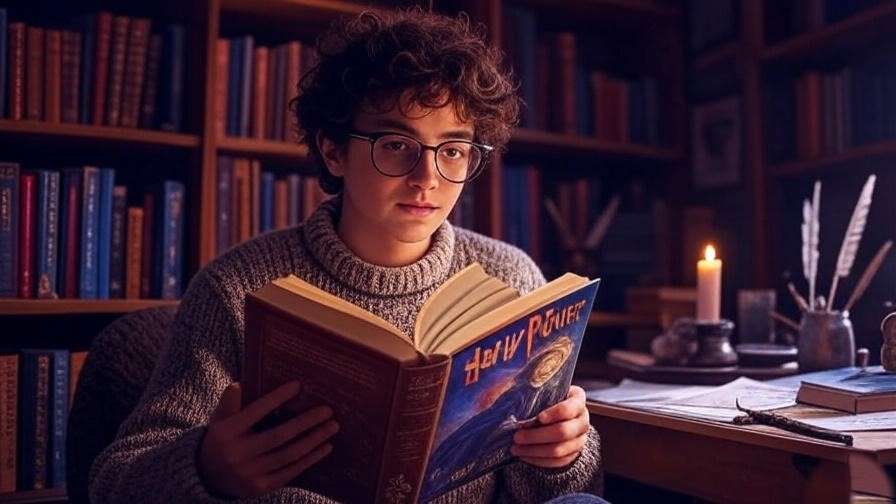
FAQs
Does every Harry Potter book pass the Bechdel Test?
Most books pass, with Order of the Phoenix and Deathly Hallows showing stronger female interactions. Earlier books like Philosopher’s Stone pass narrowly due to limited female dialogue.
Do the Harry Potter films perform better or worse than the books?
The films pass less consistently, as condensed narratives reduce female interactions. However, key moments like Hermione and Luna’s discussions remain impactful.
Why does the Bechdel Test matter for Harry Potter fans?
The test offers a framework to evaluate gender representation, sparking discussions about inclusivity and the series’ cultural impact.
Are there other ways to evaluate gender equality in Harry Potter?
Yes, consider character agency, narrative roles, or feminist readings that assess how women shape the story beyond the Bechdel criteria.
Does Harry Potter pass the Bechdel Test? The answer is a qualified yes—most books and films meet the criteria, but the frequency and depth of female interactions vary. The series shines with characters like Hermione, McGonagall, and Luna, who embody intelligence, courage, and individuality. Yet, its male-centric narrative and occasional reliance on stereotypes reveal room for growth. By examining gender dynamics through the Bechdel Test and beyond, fans can appreciate the Wizarding World’s strengths while engaging critically with its legacy. Share your thoughts in the comments, join fan discussions, or explore related articles on our blog to dive deeper into Harry Potter’s enduring impact.

